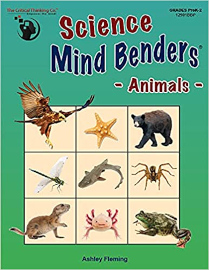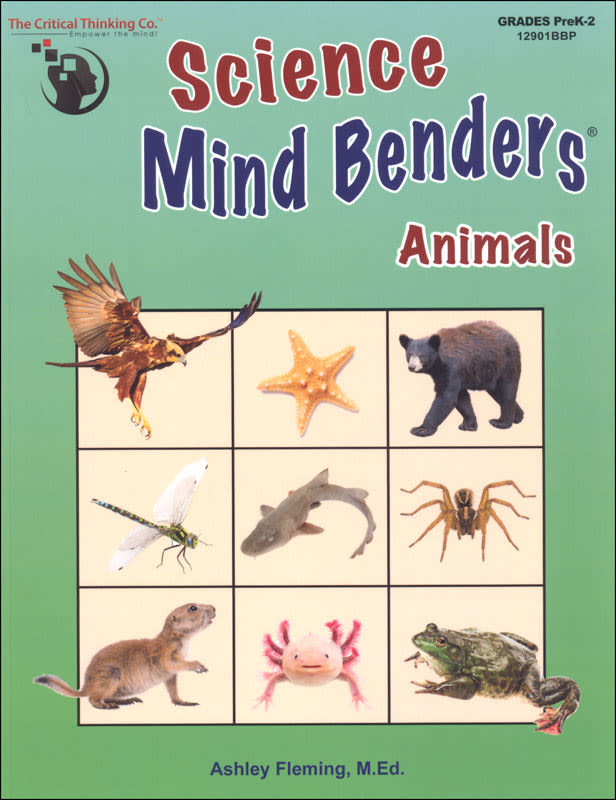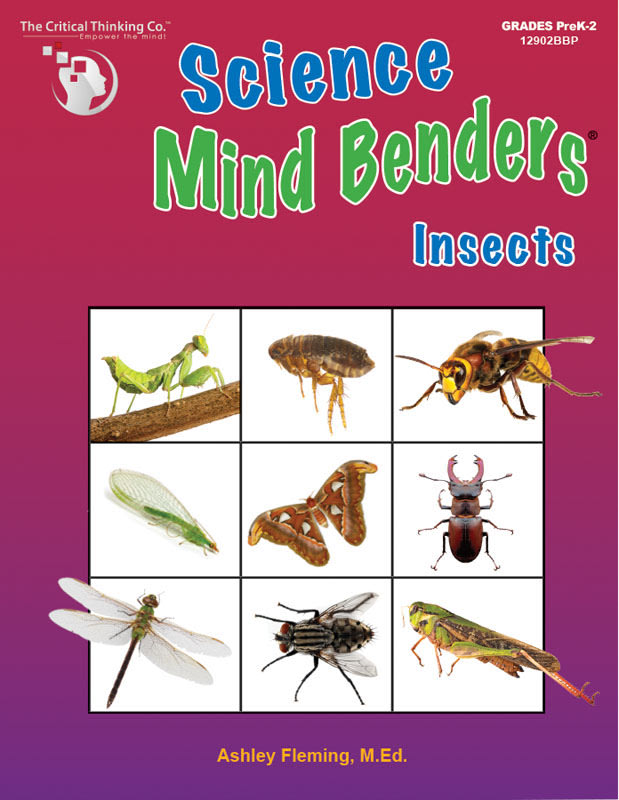The Science Mind Benders® series has two books, subtitled Insects and Animals. These science books differ from other Mind Bender series because the subject area (science) content takes precedence over the critical thinking skills. The books were written for prekindergarten through second or third grade. However, I would recommend using them with students up through fourth grade because the science coverage is so detailed.
The books present information about insects and animals, accompanied by full-color illustrations—close-up photos and drawings that reveal lots of details. Critical thinking activities involve both close observation and deductive reasoning to focus student attention on those details and provide more scientific information. The science information conveyed in both books is more substantial than what young students will encounter in many grade-level science textbooks.
Each of the seven lessons in these books focuses on one topic with several parts per lesson. The topics in Insects are Insect Anatomy; Anatomy: Eyes and Spiracles; Insect Metamorphosis; Beetles; Bees and Wasps; Moths and Butterflies; and Four Common Flies. The topics in Animals are Vertebrates and Invertebrates; Warm-Blooded and Cold-Blooded Animals; Mammals and Reptiles; Fish and Amphibians; Carnivores, Herbivores, and Omnivores; Types of Birds; and Camouflage.
Each lesson opens with an introduction page that teaches about the topic with illustrations, definitions, and information. Parents need to read and discuss this information with students, and they also need to work through the activities with them. These books are not intended for independent work.
The information page is followed by a series of activity pages. Some activities ask simple questions that review definitions, while others have students match up clues or lists of features with the image of the correct creature. Still other activities have logic grids for students to complete based on clues. (Because these books were designed for young students, the instructions have them mark the logic grids with “x” for yes and “-” for no.) Students must look very carefully to identify the correct details. The activities are challenging, but because they are often presented as puzzles, students are likely to enjoy tackling them!
Following the lesson’s set of activities is a page that highlights six “Interesting Animals in This Lesson” with an image and paragraph of text for each. The lessons conclude with a review page. Those in Insects have different styles of activities while those in Animals all have word banks with terms that students will match up with images or use to fill in blanks. Some of the review pages in Animals add a research question, such as “Do whales have hair?” (p. 31).
A glossary and answer key are at the back of each book. Both books are available as softcover books or ebooks in a proprietary format.
Summary
The Science Mind Benders workbooks should be considered primarily as a resource for science instruction with the critical thinking activities serving as an interesting way to reinforce the instruction.










